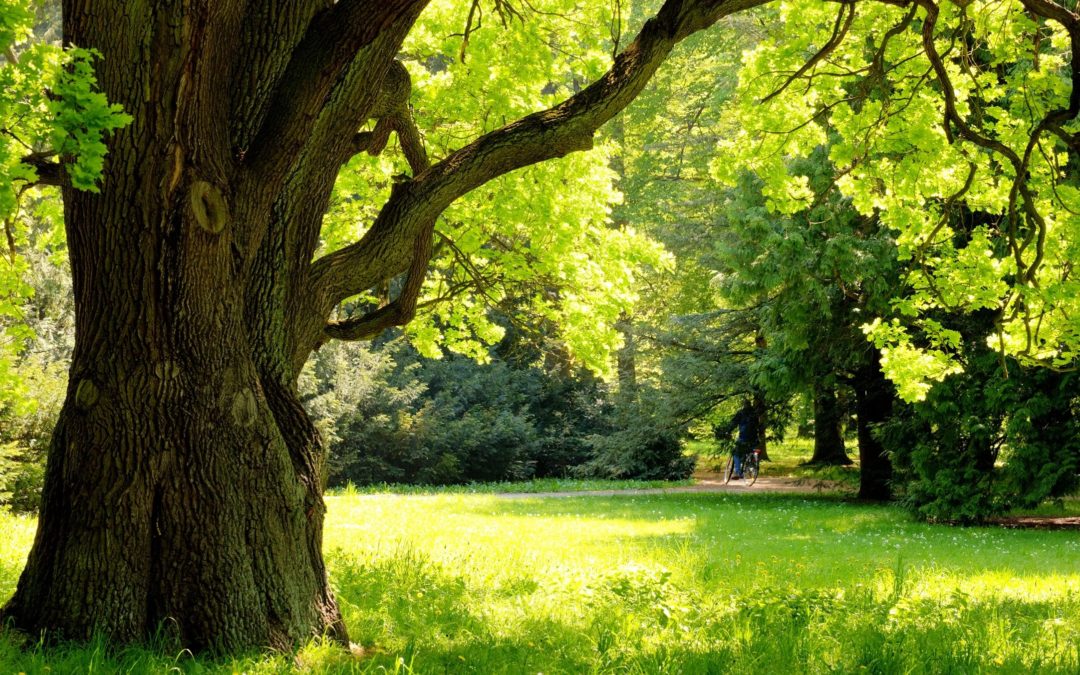Most tree issues are relatively easy to diagnose, specifically when it comes to insects or diseases attacking the leaves or branches – or any problems with the above ground part of the tree. When it comes to diagnosing issues below ground, where the roots are located, it becomes more difficult.
We tend to see trees suffering during the summer months with chlorotic leaves, thinning canopy or smaller leaf size. Many tree owners suspect it’s a pest issue and turn to fertilizers or chemical sprays to improve the situation. If there is compaction the root zone, chemical applications will not help.
Compaction is one of the biggest health risks to trees and is caused by excessive traffic or activity on the soil around the root zone. This compaction or compression occurs because excessive weight can press the soil particles together tightly reducing pore space between them. That pore space is meant to hold air and water. This air and water is required in order for the roots to take up water in the soil and breathe.
Many things can cause compression of soil particles, including lawn maintenance and vehicles parked on or driving over the trees root zone, lack of drainage or flooding and unmonitored construction activities. Even constant foot traffic I the same areas can cause soil compaction. The best remedy is prevention – designated paths and restriction of activity such as driving around trees can help.
When we see that the tree isn’t doing well because of unexplained decline, such as early fall color or other symptoms mentioned earlier; we must look to see what the underlying problem may be. If we determine compaction is the reason, we must acknowledge that there is no easy remedy. BUT there is help.
If you suspect compaction to be an issue, have your site conditions reviewed, assess tree health and the soil around the tree. Often the compaction can be assisted with good cultural practices such as keeping off the root zone, adding mulch and supplemental irrigation.

